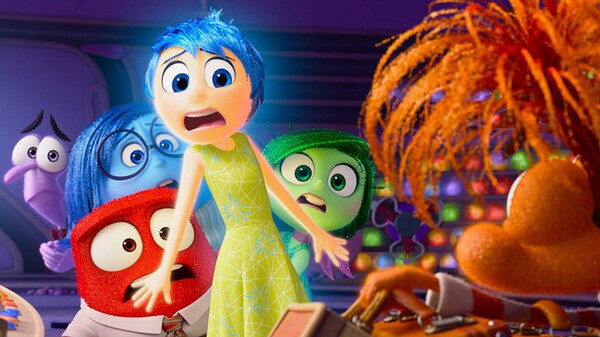Avant-garde films searching for lost fatherhood
The father figure in the two generational works of art: “To Kill a
Mockingbird” and “The Tree of Life”
There are works of literature and film that, in addition to being
timeless, portray the greatest problems of their generation. In my
opinion, this is the case with To Kill a Mockingbird, the first and
only novel of Harper Lee published in 1960. This Pulitzer Prize winning
novel was then magnificently adapted to cinema with the same title.
Gregory Peck played such a convincing Atticus that it won him an Oscar
that same year.
The Tree of Life is a film produced by Terrence Malick fifty years
later during an era that felt the deleterious effects of the sexual
revolution and the spread of the gender ideology. Among these is the
misrepresentation of one of the most vital relational experiences to
the formation of personal identity: paternity.
It’s a fact that fatherhood is compromised in today’s culture, be that
in daily life or in art, which reflects life in a more or less deformed
or deforming manner. It’s a fact that art’s representations stretch
beyond that of life, sometimes morbidly without giving solutions or
opening doors to hope. This reality discussed in a study published on
our site that analyzes the image of paternity in the Italian press:
“The current crisis of paternity emerges in an evident way from the
negative roles and tone continuously attributed to the father through
the diverse artistic representations” (Studnicki).
There are some artists who shed light that allows us to better
understand ourselves and the world in which we live. This will continue
as will keep happening as long as there burns a flame of humanity
within the artist. Surely this light, though accessible by all, must be
sought out using the right “glasses” that allow one to perceive it.
I have selected these two masterpieces, which I highly recommend to our
leaders, because they are epochal at dealing the subject of paternity.
I present these with some indications to orient their reading or
viewing.
To Kill a Mockingbird
The story tells how Atticus Finch, a widower and lawyer from the small
town of Maycomb County (Alabama) divided by racism in the thirties,
accepts to defend a young black man accused of raping a white woman. A
majority of the townspeople try to convince Atticus to renounce the
case, but he decides to stick with it.
The theme is apparently the denial of racism fought with the sheer
strength of conscience of an honest, normal, serene, and lonely lawyer.
Though he fails to save the innocent man, he manages to awaken the
dormant consciences of his fellow citizens. Moreover, he sows the seed
of a new way of seeing life in his two children, particularly in his
mischievous and lively seven-year old daughter Scout, who tells the
story from a child’s point of view. “Atticus Finch didn’t do anything
that could possibly arouse admiration in anyone… he never went hunting,
he didn’t play poker, or fish, or drink, or smoke. He sat in the living
room and read.” This is how Harper Lee- through Scout- described the
main character of his renowned novel.
The contrast between the racial tension that permeated everyday life in
the town and in the main characters, and the candid understanding of
the world through the eyes of a young girl, is narratively almost
insurmountable. Harper Lee wrote only one novel. But even if he had
only done this, his life would have given us a priceless gift.
The two children, as they play in the neighborhood and attend the local
school, begin to discover the adult world, with all of its perplexities
of the latent conflicts, the embedded injustices in the social customs,
the pain, and the loneliness. Their eyes begin to open to the apparent
normality of the “peaceful” life in a rural town. Their father does not
interfere with their games, nor does he lecture them. He intervenes
very little, and only when necessary. But his lessons, and above all
his example, mark indelible criteria for living an upright life, both
for the big and small dilemmas of life and human relationships. For
example, he seems oblivious to his children’s’ comments and games,
distracted by his nightly reading of the paper after dinner. However,
his occasional comment to clarify, explain, or correct, without
meddling in his children’s world, show his children that he listens to
them and is there for them to give them security.
This is the role of the father, of fatherhood, so necessary for the
integral formation of personal identity, which is in continual
progression. The novel is written in the sixties, but takes place in
the thirties. There were, as there are always, dishonorable fathers.
The real culprit that raped his own daughter, who unjustly accused the
“negro” defended by Atticus in order to hide his own abuse, is a good
example. The idea, the ideal of fatherhood, was not questioned at that
time.
The girl, tired of her schoolmates’ mockery for her dad’s decision to
“get into trouble” against everyone else’s opinion, asks her dad to
relent and not defend the “negro”. Atticus Finch calmly responds with
“I don’t want to make an enemy of anyone, Scout, but before I can live
with other folks I’ve got to live with myself”. Here’s a teaching about
the dignity of conscience that reaches the seven-year old Scout. These
terms “dignity” and “conscience” are too abstract for a child, but
their meaning can already be grasped.
The social and cultural landscape has changed. It is not necessary to
explain it in detail: moms by choice, surrogate mothers, homosexual
fathers that commission their children, test-tube babies…and the
variants continue to multiply. The various predicaments that follow are
described quite well by Elizabeth Marquardt in One Parent or Five? A
Global Look at the Today’s New Intentional Families, accurately
summarized by Aceprensa, 85/11 (November 23, 2011). Ultimately the
authors of suspicion (Nieztche, Freud and Marx) kill God, and as a
consequence, kill the father. It is no wonder that Terrence Malick, the
avant-garde author who doesn’t receive much media attention and makes
few, but high quality, films, directed a movie about the paternity of
God, origin of all paternity, in order to recuperate the father figure.
For him, as certainly for all, there are no shortcuts.
The Tree of Life.
Terrence Malick’s film, winner various film awards including the Golden
Palm at the Cannes’ 2011 Film Festival, is not a simple film. Many were
fascinated by its visual poetry and the beauty of the music. Many
others were deceived or didn’t understand it. I recommend watching it
at least two times, or if not possible, to read this article written by
Enrique Fuster: “
Ten Keys to Understanding The Tree of Life
” (Spanish only), to understand the complete narrative structure so as
not to get lost in the first viewing of the film.
The film synopsis: In the United States, during the fifties, Jack
(Hunter McCracken) is a boy that lives with his parents and siblings.
While his mother, Mrs. O’Brien (Jessica Chastain) incarnates love and
tenderness, his father (Brad Pitt) represents severity, which he
believes to be necessary to teaching his child how to face a hostile
world. That process of formation extends from childhood to adulthood.
That is when Jack (Sean Penn) recalls the transcendental moments of his
childhood and tries to understand what influence they had on him and to
what point they have determined his life.
Under this apparently simple canvass, Alberto Fijo comments “very few
times has cinema spoken of God, of fatherhood, of motherhood, of
filiation, of fraternity, of marriage, of freedom, of sin, of grace, of
freedom, and of the mystery of pain, with the suggestive capacity of
this film, which is clearly much more than an abstract and
disinterested reflection and incorporates a lot of personal experience”
(
Fila siete
– Spanish only). Much is clarified in the beginning of the film, which
opens with an entire biblical quotation from the book of Job, 38: 4-7:
Where were you when I put the earth on its base?
Say, if you have knowledge.
By whom were its measures fixed? Say, if you have wisdom;
or by whom was the line stretched out over it?
On what were its pillars based, or who put down its angle-stone,
When the morning stars made songs together,
and all the sons of the gods gave cries of joy?
Various male voices in the background recite, “mother…father…brother…”.
Such an introduction culminates with a woman’s voice that situates the
two coordinates of the film: “there are two ways through life: the way
of nature and the way of grace.” The same voice warns us, “you have to
choose which one you’ll follow.” And she explains that the way of grace
does not fear pain nor flees from sacrifices, while the way of nature
tends toward self-gratification and self-affirmation over the others.
Fortunately, we have been given the possibility to return at any
moment- even in the last- to the way of grace.
Around 1960 Mrs. O’Brien faces these dilemmas, highlighted by the
overwhelming challenge of suffering. She cries out to God with
heartbreaking sincerity because she feels incapable of overcoming her
despair over the death of her youngest of three children. “He is now in
God’s hands”, says her husband to console her. “But hasn’t he always
been in God’s hands?”, she responds with astonishing lucidity.
A similar anguish to that of the mother’s grips her eldest son Jack
(Sean Penn), an unsatisfied successful executive who feels empty and
longs to reconnect with his roots and with God. To do this, he
remembers with God his childhood and youth, brightened by the happy
escapades with his siblings and overshadowed by his progressive
distancing from his father- a man of integrity, pious and kind, but
authoritative in treating his children with excessive rigidity.
The movie is a continual dialogue of the characters with God
voiced-over images of creation, flashbacks of life’s memories, and
light- a light that infuses everything, with an excellent musical
selection and soundtrack. It is as if the characters were dancing to a
visual symphony.
Fuster and Fijo have a point. The key to understanding Malick’s
perspective is the book of Job, where God responds to man’s question to
the meaning of suffering and of his life. But it must be read from the
beginning: “The Lord answered Job out of the storm and said: who is
this who darkens counsel with words of ignorance? Gird up your loins
now, like a man; I will question you, and you tell me the answers!
Where were you….?” But above all, it must be read from the end: from
the sequences of Paradise that begin with the passing through the door
into the rocky desert, with the adult Jack arriving there, following
his brother and searching for himself. The God of the film goes well
beyond the God of the book of Job: he is not just a Creator, he is a
magnanimous and providing Father who holds all of our loves, our
sorrows, our relationships, and every moment of our lives, in his
hands.
A film this powerful was necessary to artistically reclaim the Origin
of fatherhood which we have lost.














